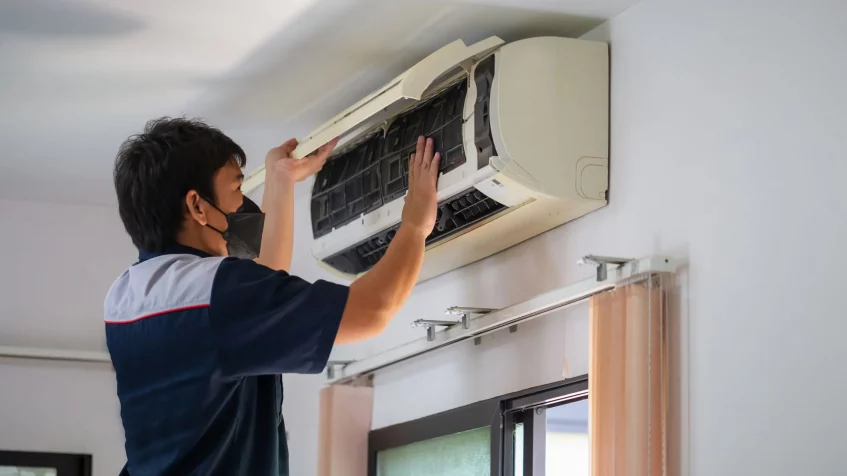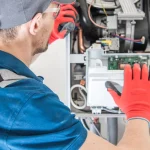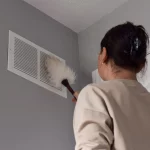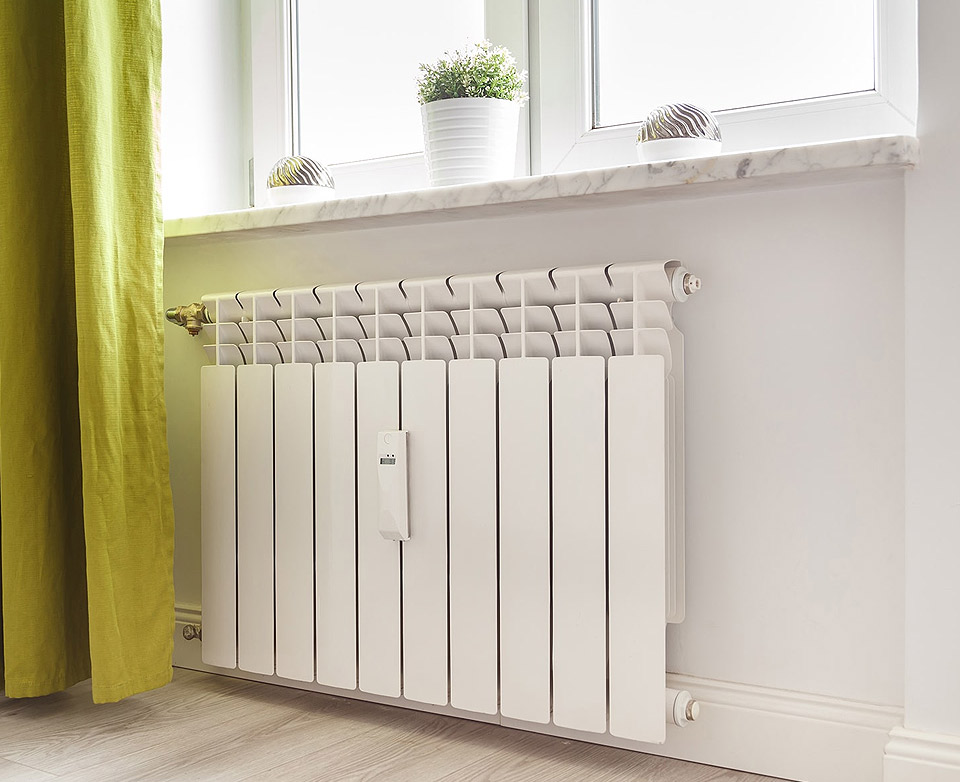
Tackle Central Air Conditioning Problems Like a Pro
Ah, the sweet relief of central air conditioning on a sweltering summer day! For many of us, central air conditioning is a modern marvel that we often take for granted. But what happens when it decides to throw a tantrum and leave us sweating in the heat? Well, fret not because in this blog post, we’re going to explore common central air conditioning problems and learn how to tackle them like a pro. From icy coils to pesky leaks, we’ve got you covered.
Understanding Your Central Air Conditioning System
Before we dive into troubleshooting tips, it’s essential to have a basic understanding of how your central air conditioning system works. Most central AC systems consist of two main components: the indoor unit (evaporator) and the outdoor unit (condenser). These units work in harmony to cool your home by circulating refrigerant and removing heat from indoor air.
Common Central Air Conditioning Problems
Frozen Evaporator Coils: One of the most frequent problems homeowners face is frozen evaporator coils. This occurs when the coils get too cold, causing them to freeze. This can be due to a dirty air filter, low refrigerant levels, or restricted airflow.
Pro Tip: Start by changing or cleaning your air filter regularly to ensure proper airflow. If the problem persists, it’s best to call in a professional to check the refrigerant levels and address any leaks.
Leaking Refrigerant: Leaking refrigerant can lead to a drop in cooling efficiency and, ultimately, an AC system that can’t keep your home cool. Common signs of a refrigerant leak include a noticeable drop in cooling performance and hissing sounds.
Pro Tip: If you suspect a refrigerant leak, don’t try to fix it yourself. Refrigerants can be harmful, so it’s best to call a professional technician to locate and repair the leak.
Airflow Problems: If you notice weak or uneven airflow from your vents, it may be due to clogged ducts or a malfunctioning blower fan. Poor airflow can lead to reduced cooling efficiency and discomfort in your home.
Pro Tip: Regularly inspect and clean your ducts, and make sure there are no obstructions in front of your vents. If the problem persists, consult a professional to diagnose and fix any issues with your blower fan or ductwork.
Thermostat Issues: Sometimes, the problem isn’t with your AC unit itself but with the thermostat. Incorrect settings or a malfunctioning thermostat can cause your AC to run inefficiently.
Pro Tip: Ensure your thermostat is set to the correct temperature and mode (cooling). If you suspect thermostat issues, consider replacing it with a newer, programmable thermostat for better control and energy savings.
Outdoor Unit Problems: The outdoor unit, or condenser, can also face issues. Dirty or obstructed condenser coils, bent fins, or issues with the fan can reduce your AC’s efficiency.
Pro Tip: Regularly clean the area around your condenser unit, remove debris, and hose down the coils gently. If you notice bent fins or problems with the fan, it’s best to consult a professional technician.
Odd Noises: Unusual noises from your central air conditioning system can be concerning. Rattling, buzzing, or grinding sounds may indicate loose components, worn-out parts, or debris in the unit.
Pro Tip: Investigate the source of the noise, and if you can’t easily identify the issue, it’s time to call in a professional technician to inspect and repair your AC.
Tackling Central Air Conditioning Problems
Now that we’ve identified some common central air conditioning problems let’s delve into how you can tackle them effectively.
DIY Maintenance: Regular maintenance is your first line of defense against many AC problems. Change or clean the air filter every 1-3 months, depending on usage. Keep the area around your outdoor unit clean and free from debris. Inspect your ducts and vents for obstructions or leaks.
Regular Professional Maintenance: Just like your car needs a tune-up, your AC does too. Schedule annual professional maintenance to keep your system in top shape. Technicians can identify and address potential issues before they become major problems.
Correcting Airflow Issues: If you notice weak or uneven airflow, inspect your vents and ducts for obstructions. Ensure furniture or curtains aren’t blocking the vents. If the problem persists, consult a technician who can evaluate your ductwork and blower fan.
Thermostat Care: Make sure your thermostat is set to the desired temperature and mode. If you’re upgrading, consider a programmable thermostat to save on energy costs. If you suspect thermostat issues, consult a professional technician for replacement or repair.
Outdoor Unit Maintenance: Keep the area around your condenser unit clean and free from debris. Gently clean the coils as needed, and ensure that the fins are straight and undamaged. If you encounter issues with the fan or any strange noises, it’s best to leave it to the pros.
Addressing Odd Noises: Unusual noises are often a sign of a problem. Investigate the source of the noise and see if you can identify loose components or debris. If the issue persists or is hard to diagnose, don’t hesitate to call in a professional technician for a thorough inspection and repair.
Maintaining Efficiency in Your Central Air Conditioning System
Keeping your central air conditioning system running efficiently not only ensures your comfort but also helps you save on energy costs. Here are some additional tips to maintain the efficiency of your AC:
Seal Leaky Ducts: Leaky ducts can significantly reduce the efficiency of your central air system. Inspect your ductwork for any visible gaps or cracks and seal them with duct tape or mastic sealant. Well-sealed ducts keep the cool air where it belongs, reducing the workload on your AC unit.
Install a Programmable Thermostat: Upgrading to a programmable thermostat allows you to set different temperature schedules for different times of the day. For example, you can set it to be cooler when you’re at home and a bit warmer when you’re away. This simple adjustment can lead to substantial energy savings.
Shade Your Outdoor Unit: Providing some shade for your outdoor condenser unit can help it operate more efficiently. However, be cautious not to obstruct airflow, as this can hinder performance. A strategically placed shade can make a noticeable difference in cooling efficiency.
Regularly Replace Air Filters: We’ve mentioned the importance of changing or cleaning your air filters, but it can’t be stressed enough. Dirty filters make your system work harder to push air through, resulting in reduced efficiency. Make it a routine to check and replace filters according to manufacturer recommendations.
Check for Air Leaks: In addition to sealing ducts, make sure your home is free from air leaks around windows and doors. Proper insulation and weatherstripping can help keep the cool air inside and the hot air out, reducing the strain on your AC.
When to Call a Professional
While you can handle some central air conditioning problems on your own, there are situations where it’s best to call a professional technician:
If you suspect a refrigerant leak, handling refrigerants can be hazardous and requires specialized knowledge and equipment.
Electrical issues like tripped breakers or wiring problems should be addressed by an electrician or HVAC technician.
If you’re unsure about any problem or can’t identify the source of an issue, it’s safer to call a professional to prevent further damage or complications.
Remember that professional maintenance and servicing are crucial to the longevity and efficient operation of your central air conditioning system. An annual check-up by a certified technician will catch potential issues early and ensure your system is in top shape.










